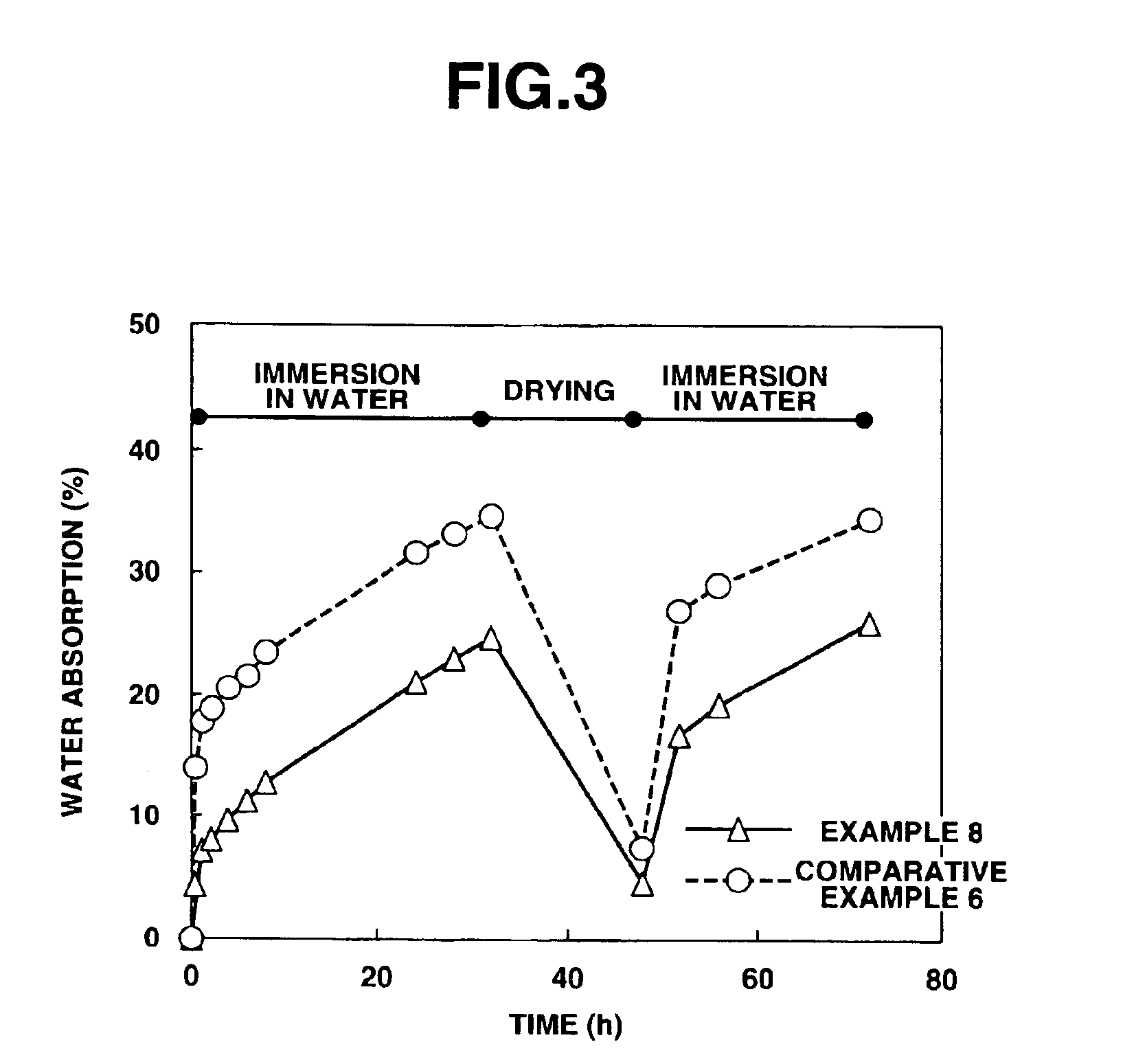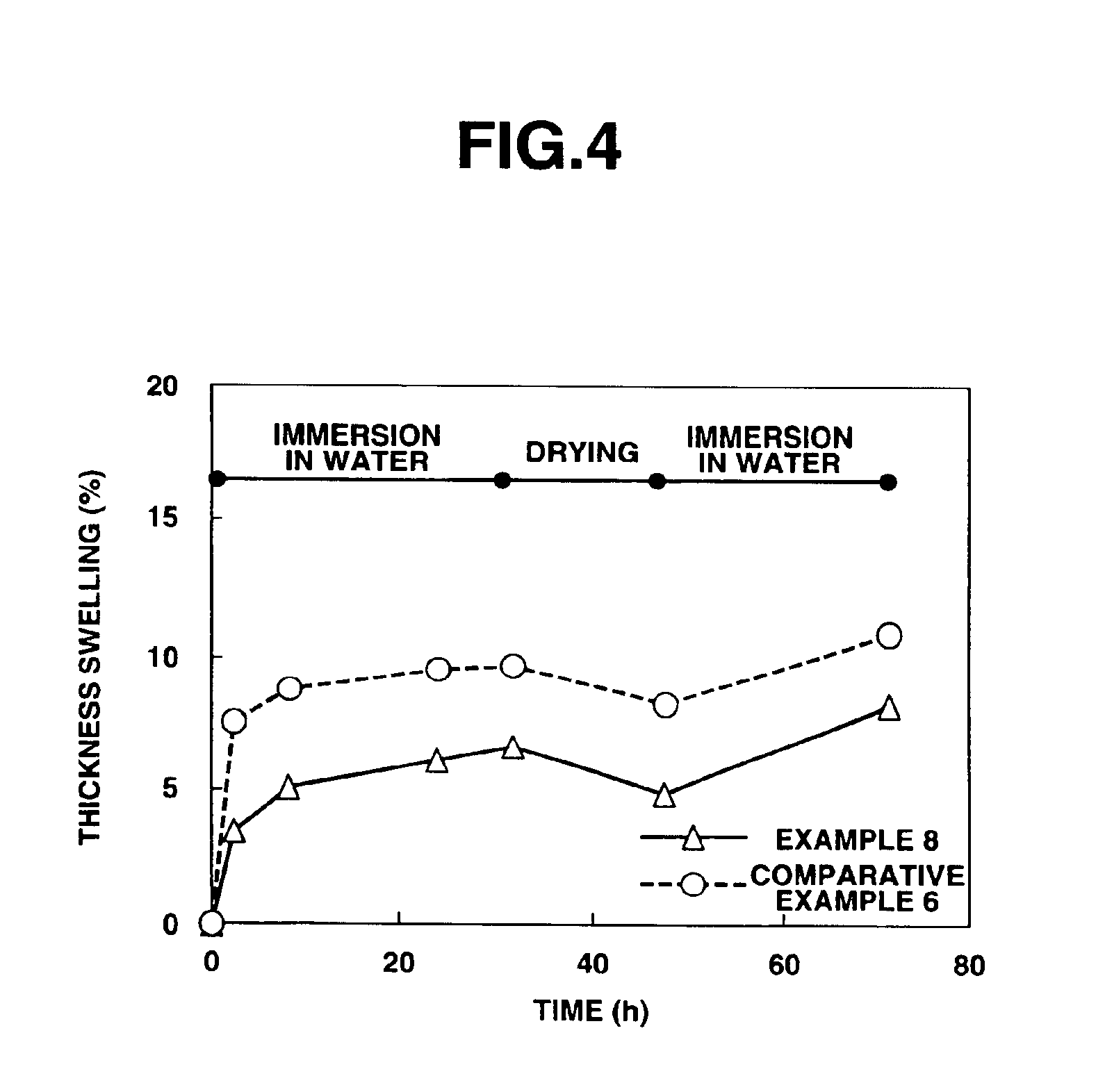Aqueous water repellent for substrate treatment, making method, preparation of modified plywood or modified laminated veneer lumber, and preparation of wooden fiberboard
a substrate treatment and water repellent technology, applied in the field of water repellent, can solve the problems of material surface loss of water repellency, more negative influence, and undesired less durabl
- Summary
- Abstract
- Description
- Claims
- Application Information
AI Technical Summary
Benefits of technology
Problems solved by technology
Method used
Image
Examples
example 1
[0115]A 500-ml four-necked flask equipped with a condenser, thermometer and dropping funnel was charged with 85 g (0.37 mol calculated as dimer) of a methyltrimethoxysilane oligomer, 154 g of methanol and 5.1 g of acetic acid. With stirring, 6.8 g (0.37 mol) of water was added to the charge, which was stirred for 2 hours at 25° C. Then 8.9 g (0.04 mol) of N-(2-aminoethyl)-3-aminopropyltrimethoxysilane was added dropwise. The reaction solution was heated to the reflux temperature of methanol and reaction effected for one hour. With an ester adapter attached, methanol was distilled off until the internal temperature reached 110° C. There was obtained 81 g of a pale yellow clear solution having a viscosity of 71 mm2 / s (weight average molecular weight 1100). The content of residual methanol in the solution was 5% by weight. This is designated Repellent 1.
example 2
[0116]Reaction was carried out as in Example 1 except that the amount of N-(2-aminoethyl)-3-aminopropyltrimethoxysilane was changed to 17.8 g (0.08 mol). There was obtained 86 g of a pale yellow clear solution having a viscosity of 116 mm2 / s (weight average molecular weight 1200). The content of residual methanol in the solution was 5% by weight. This is designated Repellent 2.
example 3
[0117]A 500-ml four-necked flask equipped with a condenser, thermometer and dropping funnel was charged with 50.3 g (0.37 mol) of methyltrimethoxysilane, 124 g of methanol and 5.1 g of acetic acid. With stirring, 6.8 g (0.37 mol) of water was added to the charge, which was stirred for 2 hours at 25° C. Then 8.9 g (0.04 mol) of N-(2-aminoethyl)-3-aminopropyltrimethoxysilane was added dropwise. The reaction solution was heated to the reflux temperature of methanol and reaction effected for one hour. With an ester adapter attached, methanol was distilled off until the internal temperature reached 110° C. There was obtained 43 g of a pale yellow clear solution having a viscosity of 65 mm2 / s (weight average molecular weight 1000). The content of residual methanol in the solution was 6% by weight. This is designated Repellent 3.
PUM
 Login to View More
Login to View More Abstract
Description
Claims
Application Information
 Login to View More
Login to View More - R&D
- Intellectual Property
- Life Sciences
- Materials
- Tech Scout
- Unparalleled Data Quality
- Higher Quality Content
- 60% Fewer Hallucinations
Browse by: Latest US Patents, China's latest patents, Technical Efficacy Thesaurus, Application Domain, Technology Topic, Popular Technical Reports.
© 2025 PatSnap. All rights reserved.Legal|Privacy policy|Modern Slavery Act Transparency Statement|Sitemap|About US| Contact US: help@patsnap.com



